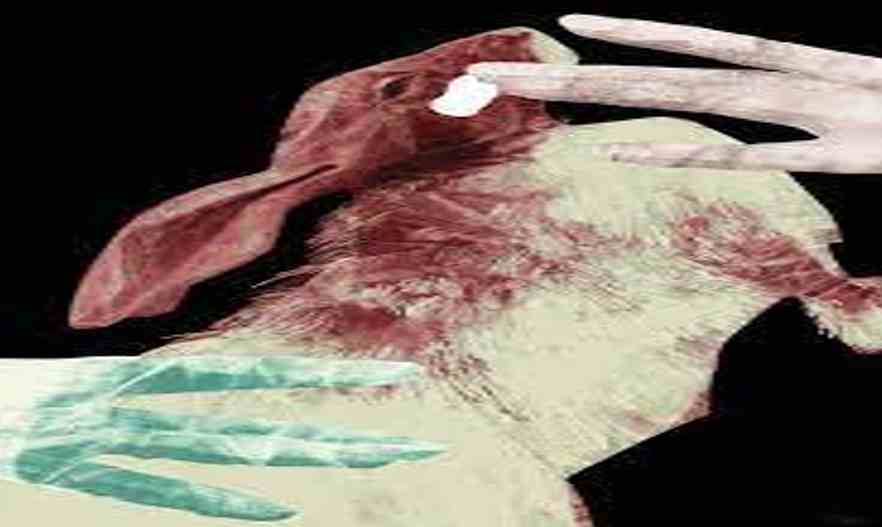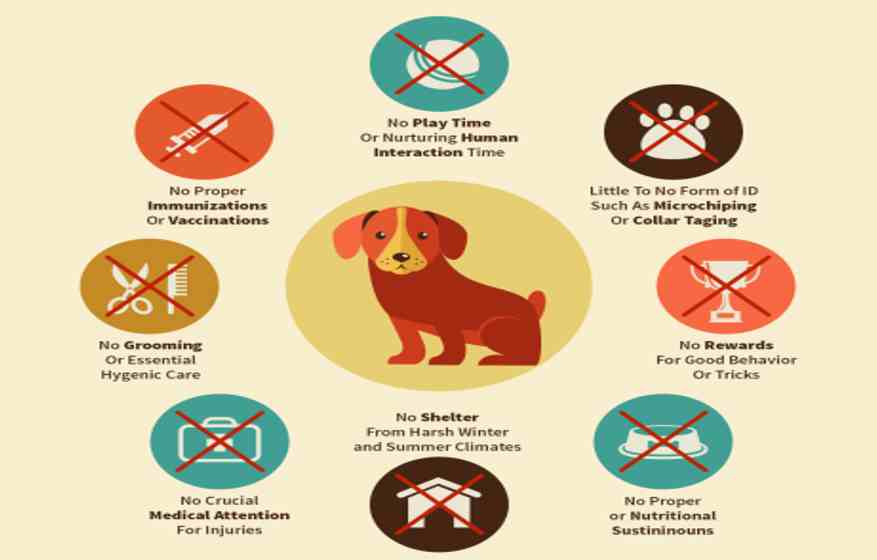
Introduction
“Animals have hearts that feel, eyes that see, and families to care for, just like you and me “.
– By Anthony Douglas William
Animal cruelty has become a common thing in the world even though the laws, treaties, and conventions are made for their protection.
India is the seventh largest country in the world in its cultural, artistic, historical, and geographical diversity, containing four of the world’s 36 biodiversity hotspots, the Himalayas, the Western Ghats, the Indo-Burma region and the Sunderland, etc. It is home to various animals, ranging from the Bengal Tigers to the Great Indian Rhinoceros, and animal protection and welfare in the country have taken a prominent position over recent years.
India is a country where animals are kept as domestic animals and worshipped by people in India.
Despite the fact that there are numerous laws, conventions, treaties, court declarations, government efforts, and projects in place, we have failed to protect the animals.
Animal cruelty occurs every day yet is not reported despite all the laws and efforts made in this country.
What Is Animal Cruelty?

Animal cruelty is also called animal abuse or animal neglect. It is basically described as depriving animals of basic facilities like food, water, shelter, and veterinary care. Torturing or killing animals also refers to animal cruelty.
It also means inflicting physical pain and suffering, leading to the animal’s death.

Animal cruelty is basically of two types: –
Physical abuse: In physical abuse it involves causing physical trauma to the animal i.e., soaring a horse to make it perform better for competition.
Neglect: Animal neglect is basically a failure to provide the Basic necessities to the animal like food, shelter, and veterinary care unintentionally or due to financial reasons or other it is animal cruelty.
How To Register An Offence Related To Animal Cruelty In India?
As mentioned in the constitution, it is the duty of every citizen to safeguard the animal anyone who violates it will be punished according to the procedure established by law.
Anyone who witnessed cruelty to the animals must report it to the local police station or SPCA (society for the prevention of cruelty to animals) and seek their help in enforcing the law for punishing the offender. If the police are unresponsive, then a complainant can reach a nearby NGO like PETA (People for the Ethical Treatment of Animals), and they will assist to take a stand against animal cruelty.
Upon witnessing cruelty, one can take the following steps to file an official complaint against the violation of animal rights.
Legal notice: If a person wants to file a complaint against the animal abuser they must have to file an official notice through a lawyer or an NGO. If there is no response from the accused for the legal notice, then an official complaint can be filed.
Complaint: An official complaint can be filed by approaching a magistrate or a forest officer who will further make the complaint to the magistrate. But the magistrate can be approached to file a complaint only by the director of wildlife preservation officer or any other authorized officer, the chief wildlife warden, or any person who has given a legal notice for at least sixty days.
WLOR: According to Section 50(4) of the Wildlife Protection Act, 1972, a Wildlife Offence Report (WLOR) can be filed. A WLOR is nothing but the first report submitted in the jurisdictional Court in wildlife crime cases. In wildlife cases, an investigation will start only after seizing the material or appropriating the evidence, and subsequently, it will lead to registering a wildlife offence.
- Animal cruelty complaints can be directly reported to:
- Local police station.
- SPCA (Society for the Prevention of Cruelty to Animals).
- Senior Government officials at the State or District Animal Welfare Board.
- Area MLA.
- The person who witnessed the cruelty against the animals can file FIR against the culprit under section 428 and 429 of the IPC both are regarded as cognizable and bailable offences and make the video or photograph during the act for the evidence purpose and submit it at the time of the complaint.
Punishment For Animal Cruelty In India
The punishment for animal cruelty under PCA ACT 1960, is any person causing harm or injury to the animals, if convicted can get away by paying 50 rupees as a penalty according to the old law.
The government prepared a draft to amend the 60-year-old Prevention of Cruelty to Animals Act, 1960 by proposing a penalty of up to 75,000 or three times the cost of the animal with a jail term of up to 5 years or both if an act of an individual or an organization leads to an animal’s death.
The draft has proposed offences in three categories – minor injury, major injury leading to permanent disability, and death to an animal due to cruel practice – and prescribed different penalties ranging from Rs 750 to Rs 75,000 and jail terms up to five years for different crimes.
The Laws Were Made To Prevent Animal Cruelty In India
There are millions of cases are reported around the world due to animal cruelty because of meat consumption, testing on animals in laboratories and medical experiments etc.
Protection of animals against animal cruelty is a fundamental right as mentioned in the constitution this multiple laws and legislations made for the protection of animal cruelty in India are as follows,
- Prevention of Cruelty to Animals Act 1960
- The Wildlife Protection Act 1972
- Sections 428 and 429 of the Indian penal code provide for the punishment of all acts of cruelty towards animals.
1. Prevention of Cruelty to Animal Act, 1960:-

The prevention of cruelty to Animals Act, of 1960 is one of the important acts established to end animal cruelty in India. The main objective of the act was to prevent the infliction of unnecessary harm or physical pain, and medical experiments on animals. The act elaborates on different kinds of cruel treatment towards animals and prescribes the punishments for the same. This Act was established by the Animal Welfare Board of India in 1960.
The main functions or objectives of the act are as follows;
- The act provides punishment for persons and causes unnecessary cruelty and suffering to the animals.
- Defines animals and their different kinds under this Act.
- Provisions relating to the establishment of an animal welfare board and its constitution, powers, and functions.
- Providing guidelines for the experimentation on animals for scientific purposes.
- Discuss different forms of cruelty, exceptions, and the killing of a suffering animal from cruelty to save it from further cruelty.
- Provisions relating to exhibition and offences against the performing animals from further cruelty.
- This Act provides for a limitation period of 3 months beyond which no prosecution shall lie for any offences under this Act.
- The Act also restricts the exhibition, performance, and training of the animals.
- Encouraging and supporting the construction of rescue homes, animal shelters, etc.
There are various forms of animal cruelty that are covered in the PCA Act 1960. It has 16 sub-sections that talk about the forms of animal cruelty. The Act also explains the punishment for animal cruelty that is to be given for each of these forms of cruelty to the animals.
The government proposed to change the old law i.e., a change in penalties from 10 – 50 rupees range to 750 to 75000 and jail for up to five years.
2. The Wildlife Protection Act 1972:-

Wild Life, a part and parcel of the environment, constitutes the nation’s wealth. it included wild animals, birds, plants, etc.
But due to development and progress, for selfish needs of man-caused much damage to the flora and fauna. So, to protect the endangered flora and fauna the govt introduced this Act.
The Wildlife Protection Act came into force on 9th September 1972. The Act was passed to protect the wild animals who were being tortured, poached, and hunted down at an alarmingly increasing rate.
The Wildlife Protection Act of 1972 consists of 60 sections with VI schedules which were further divided into 8 chapters.
According to section 2, the term “wildlife” is defined ‘as any animal aquatic or land vegetation which forms part of any habitat’.
The main objective of the Act is to protect India’s wildlife and to protect the remaining population of endangered species by banning hunting, giving legal protection to their habitats, and finally, restricting wildlife trade.
3. Sec 428 And 429 Of The Indian Penal Code:-
With respect to sections 428 and 429 of the IPC, it states that it is illegal to harm or injure any animal through cruel acts such as poaching, injuring strays, throwing toxic substances on animals, etc. The injury can also be in the form of running over animals with vehicles or injuring them with cars or bikes is punishable.
Any person who disobeys Sections 428 and 429 of the IPC will be made to pay a penalty of a minimum of Rs.2000 or above. Some culprits can also be imprisoned for 5 years or above based on the severity of the injury caused.
Sec 428 of IPC: Whoever commits mischief by killing, poisoning, maiming, or rendering useless any animal of the value of ten rupees or upwards shall be punishable with imprisonment of a maximum of two years with a fine, or with both.
Section 429 of IPC: Whoever commits mischief by killing, poisoning, maiming, or rendering useless any animal of the value of fifty rupees or upwards shall be punishable with imprisonment of a term which may extend up to five years, or with fine, or both.
Judicial Reference And Animal Rights Case Laws
1. Tilak Bahadur Rai v. State of Arunachal Pradesh (1979)
The accused in this case shot and killed a tiger. The court held that while deciding whether the accused acted in good faith or not when he killed a wild animal, it is imperative to understand the nature and dangers that lurked around the accused and under what circumstances the accused killed the animal.
- After due consideration, the Court stated that the accused shot the tiger that charged at him in good faith and to protect himself.
2. Animal Welfare of India v. A Nagaraja and Ors. (2014)
The traditional sport of Jallikattu, which is practiced in the State of Tamil Nadu (involved a series of fights between bulls) as a part of a ritual during the Pongal festival every year was brought under the scanner of the Madras High Court, and the constitutionality of the traditional sport was challenged. Under this sport, these robust bulls were released into the crowd of participants who tried to hold onto the fierce bulls. Whoever could fight the bulls and reach the finish line was awarded prizes sponsored by the various sponsors of the festival.
In 2014, the Supreme Court held that the state law passed by the State of Tamil Nadu was unconstitutional and unreasonable. It instructed the Union Government to amend the provisions of the Prevention of Cruelty Act (PCA), 1960, and laid down guidelines stating that “bulls” shall be included under the ambit of the Act. Going against the Supreme Court’s ruling, the Ministry of Environment and Forests further went on to issue a notification in 2016, again providing a green signal to the organizers of the Jallikattu event to practice the ancient sport. However, the Animal Welfare Board and PETA India decided to take cognizance of the said issue.
- On 14th January 2016, they filed several pleas in the Apex Court, The Jallikattu event is now organized extravagantly, and the organizers are exorbitantly spending big sums, despite the ban imposed by the Supreme Court of India.
3. Nair, N. R., and Ors. Vs. Union of India and Ors. :
Here, the Supreme court held that bears, monkeys, tigers, panthers, and lions should not be exhibited or trained as performing animals though this violates the right to carry out any trade or business which is guaranteed under Article 19(g).
Re: Bruno: In this case, recently, in July 2021, the Supreme Court renamed a suo moto case on the prevention of cruelty to animals as “In Re Bruno”. The judges felt that it was an apt tribute to the poor dog that died at the hands of human cruelty.
Some Of The Important Cases Are
Rajendra Kumar v. Union of India (1998)
Ivory Traders and Manufacturers Association v. Union of India, (1997)
Naveen Raheja v. Union of India (2001)
Tarun Bharat Sangh, Alwar v. Union of India (1992)
State of Bihar v. Murad Ali Baig (1989)
People for Ethical Treatment of Animals v. Union of India (2004)
Ozair Hussain vs. Union of India, (2001)
What Is PETA?

In India, PETA stands for animal rights organization. It stands for People for the Ethical Treatment of Animals.
PETA India was founded in 2000 and is based in Mumbai. It focuses on animal issues in laboratories, the food industry, the leather trade, and entertainment.
It is an American animal rights non-profit organization based in Norfolk, Virginia, led by Ingrid Newkirk, its international president.
PETA and NGO Animal Rahat, authorized by the Animal Welfare Board of India, participated in a nine-month investigation of 16 circuses in India.
After the investigation, it revealed that “animals used in circuses were subjected to chronic confinement, physical abuse, and psychological torment”. Then in the year, 2013 AWBI banned the registration of elephants for performance and banned them from performing in circuses.
In 2018, the Centre notified the draft Performing Animals (Registration) (Amendment) Rules, 2018 proposing to prohibit the performance and exhibition of all animals in circuses.
Did You Know?
- In many states across India, it is mandatory to get a pet license. However, no legislation on pet tax exists. For example, the Punjab government announced a pet tax; of Rs. 250 for dogs & pigs and Rs. 500 for cows.
Ban On Animal Testing Of Cosmetics

India proposed a nationwide ban on the animal testing of cosmetics in the year 2014. It was to stop the testing of cosmetics by companies on animals. The chemicals present in them are harming the animals and sometimes lead to death also. Thus, the government introduced this ban and made it illegal to use chemicals on their skin or feed them lethal doses. This also included a ban on using stray animals for their medical experiments which could lead to death. To report these acts the nation also launched the helpline.
There are multiple legislations and Acts being put in place by lawmakers to end animal cruelty in India.
India became the first South Asian country to ban the use of animals for experiments in cosmetic products on.
Conclusion
Although there are several developments in legislation and the making of new laws in India on animal protection, it is not effective. The punishments for the culprits who commit animal cruelty offences are not very severe which helps them get away with it easily.
Different countries have adopted different laws for the protection of animals. Austria, Norway, and Switzerland are some of the countries with the lowest animal cruelty rates. This is only because these countries have very strict laws in place when it comes to safeguarding animals, be it wildlife or strays.
India needs stronger and better animal protection laws to stop animal cruelty in India. A fine of 20 or 50 rupees is not enough for the government to intend to protect the animals.
The legislations need desperate improvisation. There should be harsh punishments and strict penalties to reduce animal cruelty in India.
The imprisonment for some of the offences should be prolonged. It is every citizen’s duty to treat animals with utmost care and affection.
So, to reduce animal Cruelty the law should be implemented effectively, and it should be the perspective of the people of the country towards the animals and treat them with kindness and love.
Top 13 Facts About Punishment For Animal Cruelty
1. Animal cruelty is also called animal abuse or neglect. It is basically described as depriving animals of basic facilities like food, water, shelter, and veterinary care. Torturing or killing animals also refers to this.
2. Anyone who witnessed the animal cruelty can file a complaint or give legal notice and report to WLOR report ( under the wildlife protection Act ).
3. According to IPC under sections 428 and 429, it is illegal to harm or injure any animal through cruel acts and made to pay a penalty of a minimum of 2000 or above and imprisoned for 5 years or more based on the severity of the injury caused leads to an animal’s death.
4. To protect animal rights PETA was established in the year 2000 and based in Mumbai. It basically deals with animal issues in laboratories, the food industry, the leather trade, and entertainment.
5. The laws made in India for the protection of animal rights are;
- Prevention of Cruelty to Animals Act 1960
- The Wildlife Protection Act 1972
- Sections 428 and 429 of the Indian penal code provide for the punishment of all acts of cruelty towards animals.
6. The government proposed to Amend the 60 years old law under PCA ACT 1960 and proposed a penalty of 750 to 75000 or jail up to 5 years or both if an act of an individual or an organization leads to an animal’s death.
7. The constitution of India also imposed a duty on the state as in DPSP ( Directive principles of State policy) under Article 48A i.e the protection of animals.
” The State shall endeavor to protect and improve the environment and to safeguard the forests and wildlife of the country”.
8. According to Article 51-A (g) of the Fundamental duties of the Indian constitution imposes a duty on every citizen to protect and improve the natural environment including forests, lakes, rivers, and wildlife, and to have compassion for living creatures.
9. The first Indian society was founded for the Prevention of cruelty to animals by Colesworthey Grant i.e the first Indian Society for the Prevention of Cruelty to Animals (SPCA) in 1861 in Calcutta.
10. AWBI was established in 1962 under Section 4 of the Prevention of Cruelty to Animals Act, of 1960. The main function of the board is to prevent cruelty, suffering, and pain to all creatures.
11. According to statistics between 2010 – 2020, a total number of 4,93,910 animals suffered due to animal cruelty.
12. The highest number of animal cruelty cases was recorded in Tamilnadu (52) followed by Maharashtra (43), Kerala (15), Karnataka (14), Telangana (13), and Rajasthan (12). A total of 199 out of the 316 cases relating to cruelty to animals were pending for more than five years.
13. In many states in India it is mandatory to get a pet license. However, there is no legislation for a pet tax.






